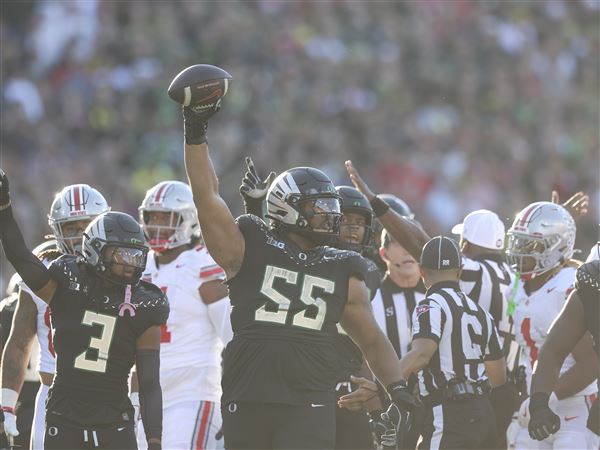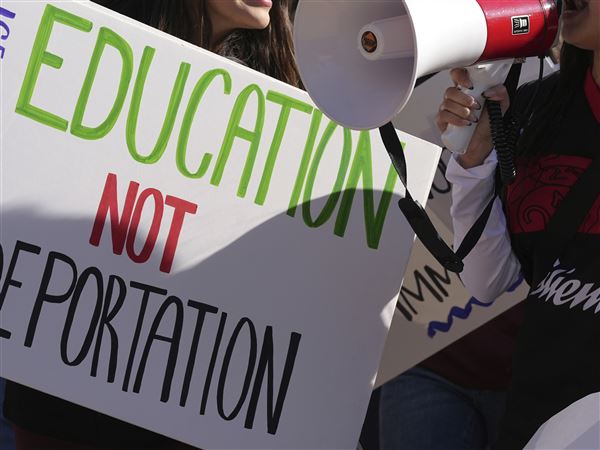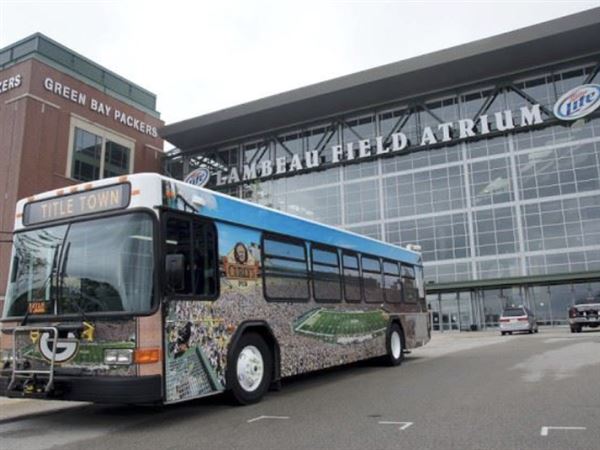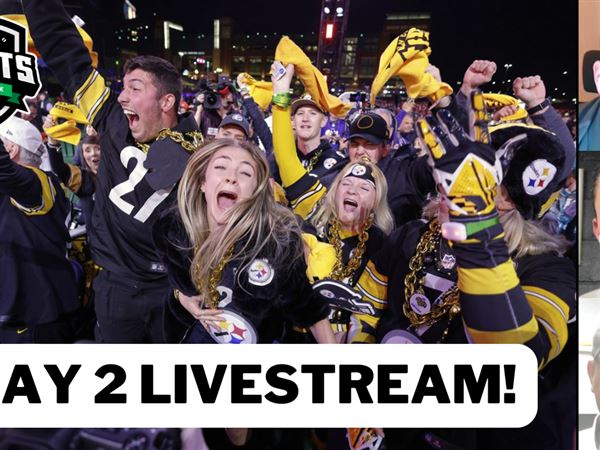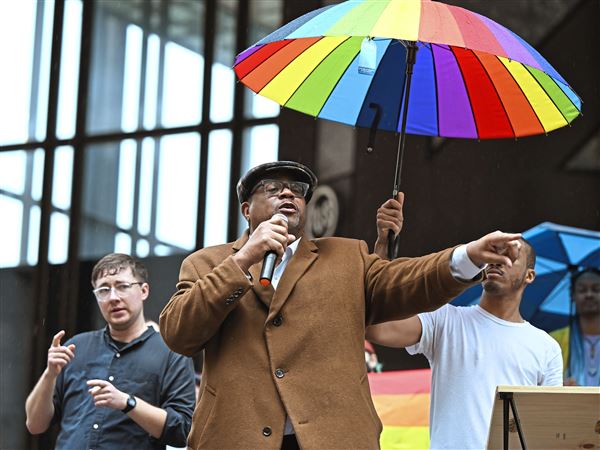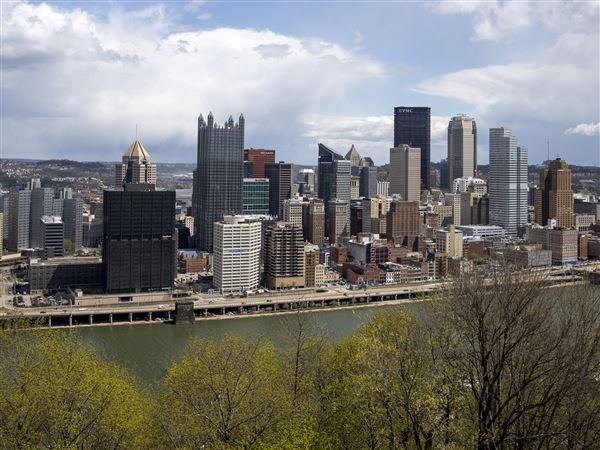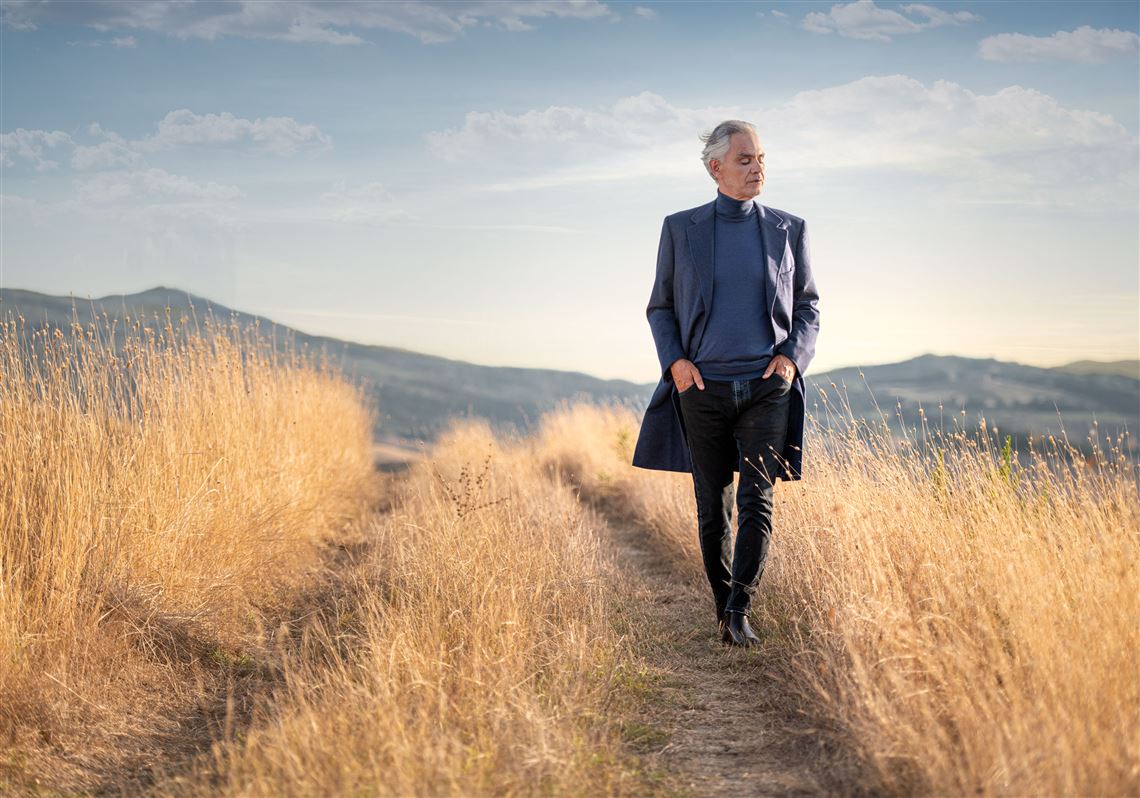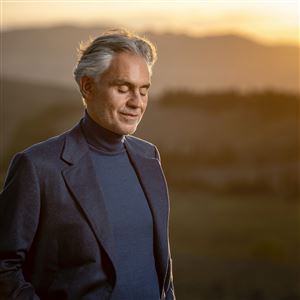If a famous opera artiste sings opera in a hockey stadium, is it still opera?
Does it matter?
When star tenor Andrea Bocelli, 63, visited Pittsburgh’s PPG Paints Arena on Saturday, the entire first half of his set was made up of opera hits from such famous titles as Puccini’s “Tosca,” Verdi’s “La Traviata” and Orff’s “Carmina Burana.”
Bocelli’s voice is famous for a reason. His pitch is pinpoint accurate, and he’s managed to capture and cash in on a warm, soaring style of singing that projects optimism and uplifts the spirit. Bocelli gives the impression of giving his all in each performance, one man’s voice against the struggles and trials of the world.
It’s quite effective in concert. At first.
Backed by musicians from the Chamber Orchestra of Pittsburgh and other local musicians as well as singers from the Mendelssohn Choir of Pittsburgh with Steven Mercurio conducting, Bocelli’s adoption of operatic hits was undeniably powerful, and witnessing the effect of such music in a pop context as opposed to the rarified atmosphere of the Benedum Center was refreshing.
(I have to wonder whether opera would fare better in such a festive, rollickingly interactive atmosphere — which it historically enjoyed — rather than the hushed reverence it currently creates, but perhaps this only works with the star power of someone like Bocelli.)
The most important aspect of his singing is that he’s able to touch a chord in his listeners, and make people feel. The problem is, between the strident sound mixing and his reliance on a clear but brawny tone, operatic hits and pop hits begin to blur together. The songs change but the effect remains the same.
This was mitigated in part Saturday by a stellar cast of guest stars. Edward Parks, an Indiana Pa., native and Grammy Award-winning operatic baritone, sang with captivating resolution in Verdi’s “Si pel ciel” from the opera “Otello.” Soprano Nadine Sierra’s voice exuded lightness and charm, while cellist, singer and songwriter Ayanna Witter-Johnson’s take on “Roxane” was a raw standout.
The second half of the program featured hits from Bocelli’s new album, “Believe,” which the singer described in an interview with the Post-Gazette as “a series of sung prayers that can also provide relief and trigger optimism.” It’s here that the overly processed nature of the production most diminished the effects of the concert. Screensaver-like projections behind the orchestra and choir didn’t add anything to the show, while whirling lighting distracted at best and irritated at worst.
Bocelli is most effective when his sincerity shines through, as in his own composition, “Ave Maria,” a lovely, lyrical work, or a heartwarming duet with his 8-year-old daughter, Virginia, a stripped-down arrangement of Leonard Cohen’s “Hallelujah” that begins with acoustic guitar and voice alone. The album is full of such vivid tracks.
But live and in person, when the projections are flickering and the lights are flashing and the orchestra and choir are playing and singing their hearts out, Bocelli’s earnestness is nearly drowned out by the rest of his show. It’s a passionate show overall, but a more “back to basics” design would have better complemented the more intimate nature of the album.
Jeremy Reynolds: jreynolds@post-gazette.com or 412-263-1634; twitter: @Reynolds_PG. His work at the Post-Gazette is supported by a grant from the San Francisco Conservatory of Music, Getty Foundation and Rubin Institute.
First Published: December 5, 2021, 11:57 p.m.
